
Volunteering with the Spirit of the Highlands and Islands
The Spirit of the Highlands and Islands team were delighted to invite students from the University of the Highlands and Islands to volunteer with us over a 6-week period work experience placement. Students were asked to research a topic or theme relating to the heritage of the region which interested them, and develop creative or informative stories based on this research.
In this Spirit: Spotlight, MLitt History of the Highlands and Islands student Janet Bryer writes about her experience volunteering with the project and uncovering the 'Spirit of the Highlands and Islands' in the collections of the Highland Archive Centre.
For anyone arriving in Inverness, the castle looms above the city as an impressive statement of its strength and resilience. The expectation of the visitor is that the castle will house the history of the rich and the wealthy with appropriate stories of rebellion and love affairs. It can come as a disappointment that the castle houses no such history – that it has been a place until recently of very real stories of individual folk of the Highlands. For this reason, the development of the Spirit of the Highlands – based around Inverness Castle is such an interesting project. The desire to make the building a hub for all that has happened in the past and to provide a heart for the present Highland and Islands community seems to make it a story all can participate in.
Generally, I would not volunteer for such a project, but became aware of it through the University of the Highlands and Islands (UHI) website. For the last year I have been studying for an MLITT in the History of the Highlands and Islands. The scope of what I have learnt has necessarily been very limited – concentrating principally on the history and the scope of the Clearances but it has provided an indication of the some of the special qualities that relate to the area. It was to see how what I had learnt was reflected in the archives.
I was born in Bristol and have gradually worked my way up the country to eventually finding myself in Inverness. Although I had visited here a good many times before, the lockdown gave an opportunity to appreciate the scenery and people in a way that had not been possible when just ‘popping into town’. My impression was of a group of people who are friendly, welcoming, willing to help, listen and generally cheerful. They have battled on through the difficulties of COVID, mask wearing, separation from loved one generally understanding that it was for the greater good.
The opportunity to engage with the archives was great. There is a resource of both the everyday folk and the greater stories, those who are names on everyone’s lips and those who are known to few. There are of course those stories might perhaps be best forgotten. In looking at what stories I could include from the archives which would best capture the Spirit of the Highlands I had by several aims - to include stories which represented some of the characteristics I had experienced, stories which should be told and stories of objects which might have been forgotten.
The choice of course was vast. Because the history of the everyday is reflected in the archives it is amazingly easy to become too interested in items which I felt did not fall within my brief. There was the diary of Anne Fraser, started on the 1st of September 1826 with the poem:
Time by moment steals away
First the hour and then the day
Small the daily loss appears
Yet it soon amounts to years
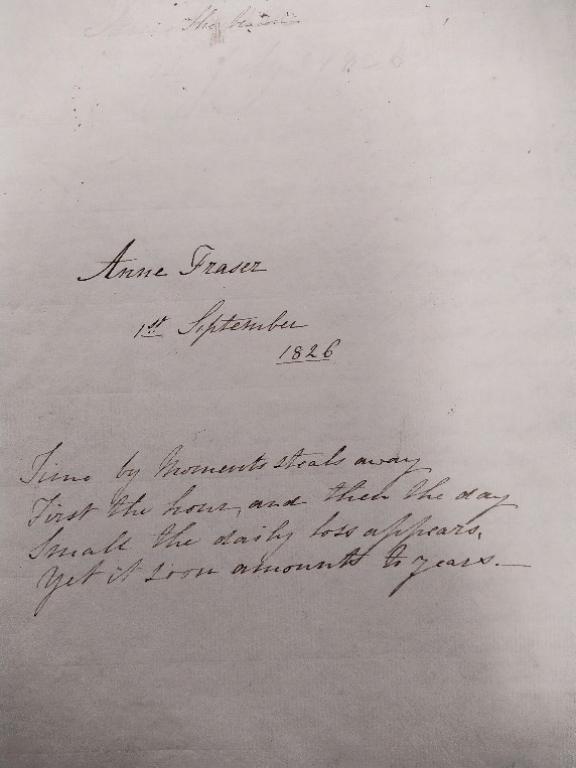 Image provided by Highland Archive Centre/ Janet Bryer
Image provided by Highland Archive Centre/ Janet Bryer
The Diary of Anne Fraser (accession ID: HCA/D1038)
Within the book was also a flower which now must be nearly two hundred years old. Anne writes about her heart ache, crossing the river to see her aunt in Cromarty and finishes with her concern about cholera in Inverness and that she has not heard from her brother James for a long time. I was left considering what happened to her and her brother.
Another item I did not include was an autograph book from RAF Evanton. There are small indications here of relationships however fleeting between the men on the base in 1941 - 1943. There were other indications of activities going on including the 1869 licence to mine gold granted by the Duke of Sutherland and a map of the discovery of the dead body of in 1835. Whilst these were all interesting, they did not symbolise for me what I was looking for.
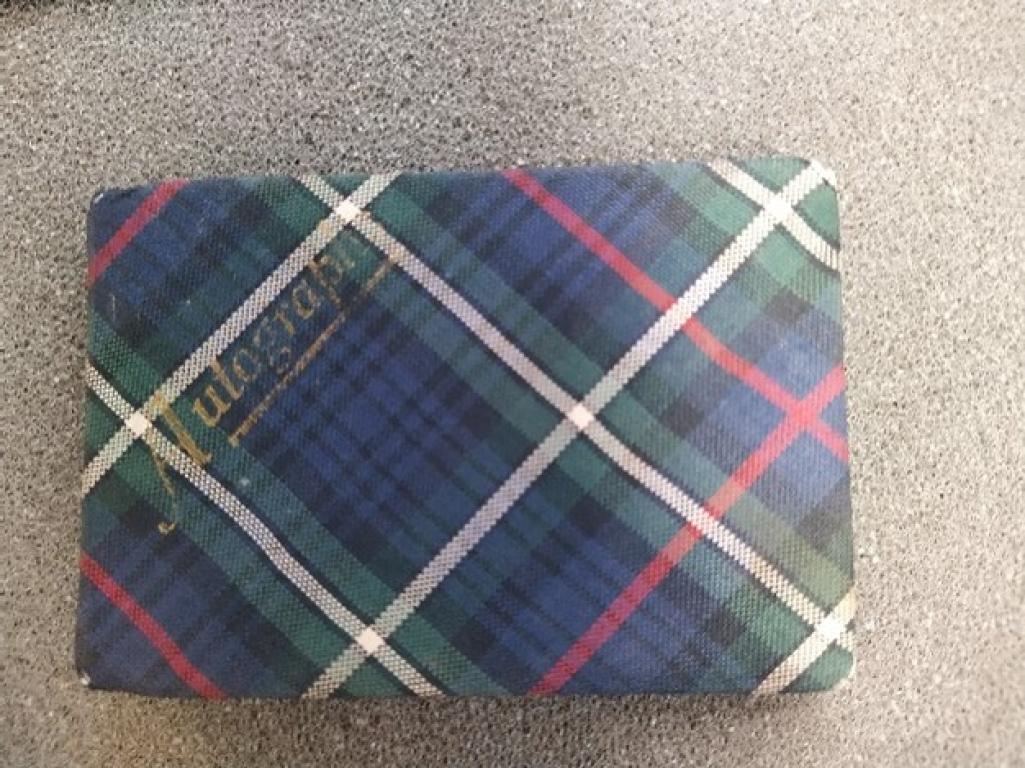 Image provided by Highland Archive Centre/ Janet Bryer
Image provided by Highland Archive Centre/ Janet Bryer
 Image provided by Highland Archive Centre/ Janet Bryer
Image provided by Highland Archive Centre/ Janet Bryer
Autograph Book, RAF Evanton (accession ID: HCA/D1594)
***
The first story I chose was based on my first experience of dealing with the Highlands – when I worked for the United Kingdom Atomic Energy Authority (UKAEA) in Dorset.
I used to liaise with colleagues in Dounreay, fly to Wick for training days and audits. It used to impress me that the lifestyle seemed more relaxed, whilst still being able to get the work down. There was a willingness to be supportive and to work together. However, I suspect that there was also the realisation that Dounreay was a very long way from Dorset and even further (in some ways) from London where our Headquarters was based. The combination of the practical skills which the appreciation of the world outside was something which I wished to capture.
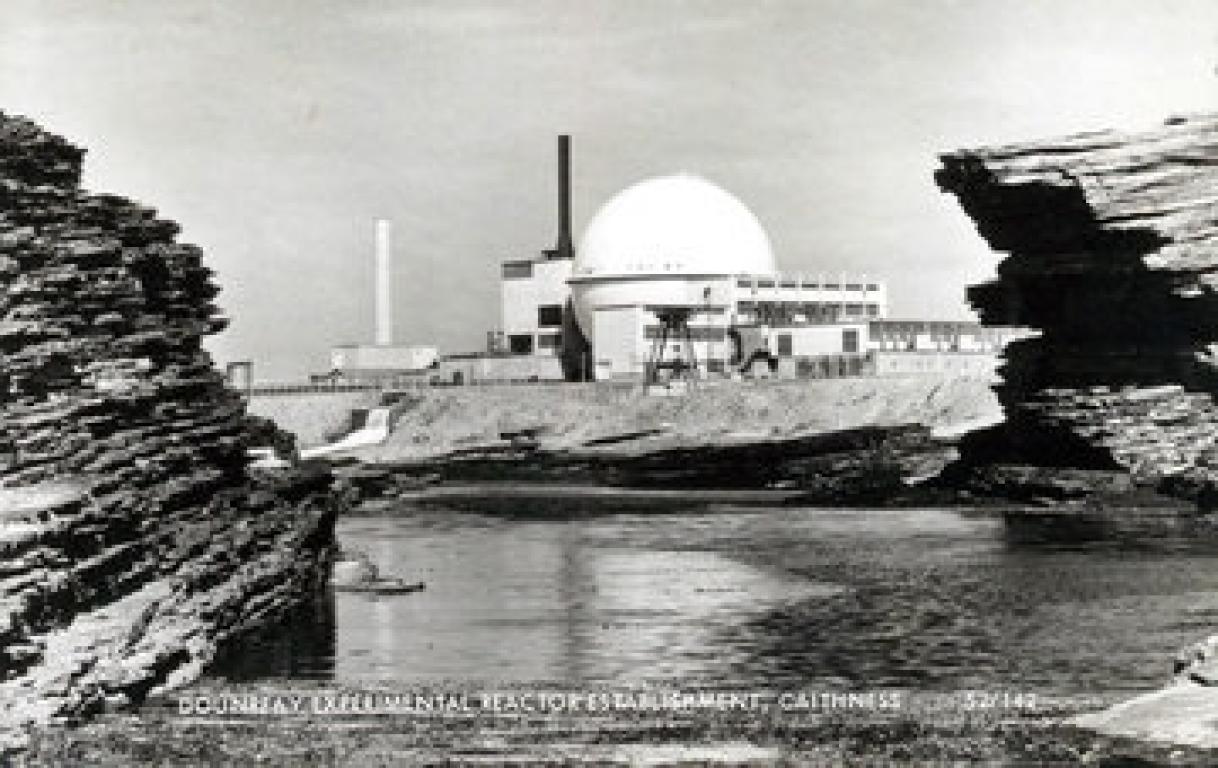 Image provided by Am Baile/ Highland Libraries
Image provided by Am Baile/ Highland Libraries
Dounreay Nuclear Reactor, Caithness
The second story referred to the history of the rose window which is to be part of the Inverness Castle project. In press releases, James Keith who donated the window is referred to as ‘one of the most correct, attentive and upright businessmen in the North of Scotland’. I was interested in what made him donate this costly window when it was clearly not for his own recognition. This led to finding a little history of the Keith family who were booksellers in Inverness and Dingwall. Brothers Charles and James were also Methodist. James ran the Society in Dingwall and Charles was a Trustee of the Methodists in Inverness. Clearly both men served the church in the roles which were appropriate for them. However, they did not limit their work to the church but appear to have allowed their gifts to be of best use to the community. The window is a thing of beauty (so I understand), preserved by the Council to reflect how the historic gifts can be used to inspire the present day.
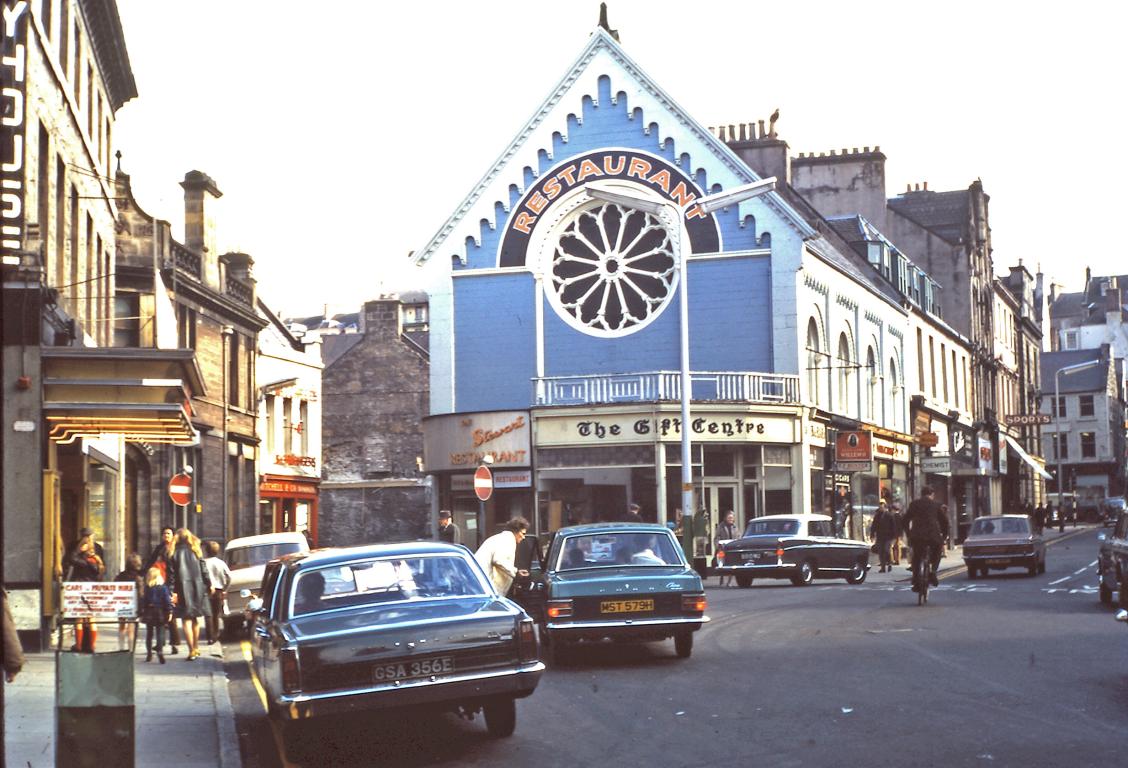 Image provided by James Smith
Image provided by James Smith
The Rose Window in the 1980s, Academy Street, Inverness
The third story was influenced by the events around Remembrance Sunday. There are stories of bravery which remain unrecognised and even as I was looking at the names of the individuals who had received medals, I became aware of those who had either never had their stories told or bravery recognised. The particular story I included was based around the Second World War – but it was illustrative of the acts of bravery which have taken place through the centuries and again continue to the present day.
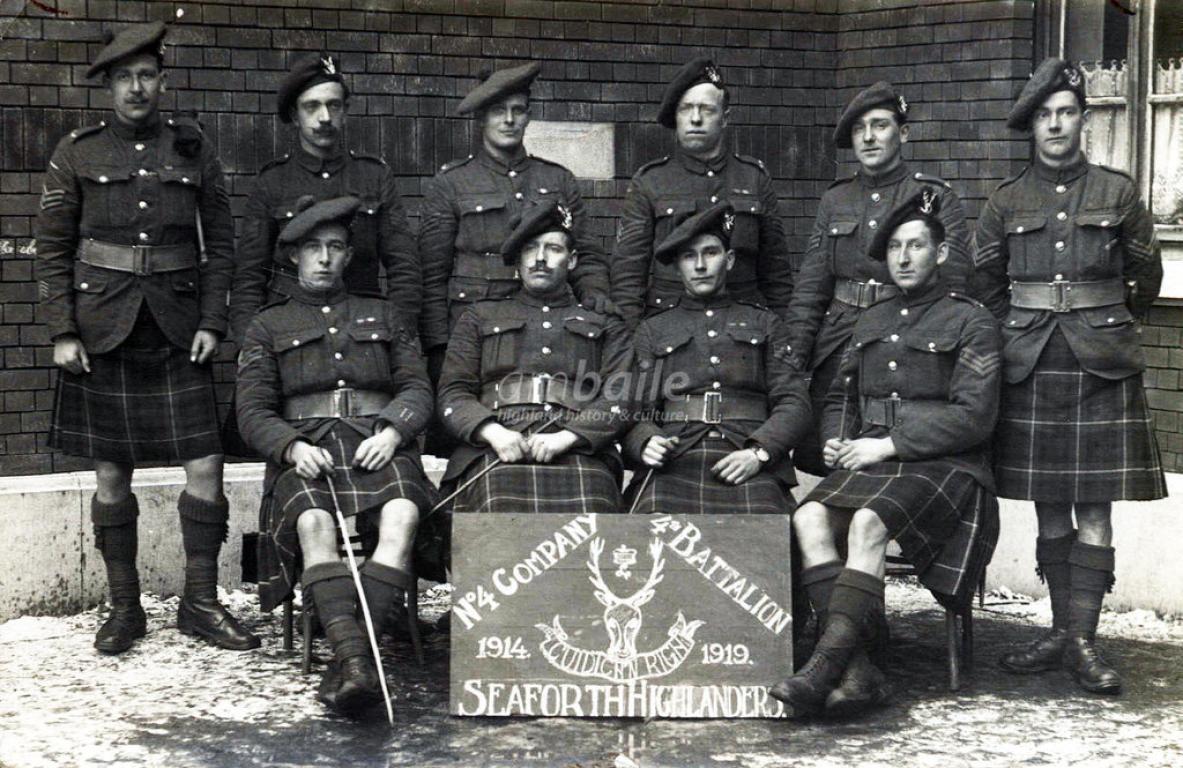 Image provided by Am Baile/ Gairloch Museum
Image provided by Am Baile/ Gairloch Museum
The Seaforth Highlanders, 1919.
For an outsider visiting the Highlands, as it would have been for me, the ‘Spirit of the Highlands’ would be characterised as the physical features – the mountains, the heather, the snow and the lochs. Yet without the people these would only be a beautiful wilderness. The mountains would exist without the people, but it is the people who shape how they look. So, I have come to a greater understanding that the ‘Spirit of the Highlands’ is the people in the context of the setting. The ‘entrepreneurship’ which is shown in communities is perhaps a development of the crofters, balancing their time on the land with other means of making a living, the gift of time and money to build beautiful items in the past are echoed in the community art of the present and bravery of individuals who continue to give their lives to work to help others completes the Spirit of the Highlands.
Janet Bryer